 |
 |
 |
| |
The fast and the continuous: dolutegravir-based antiretroviral therapy achieves impressive viral load suppression in CALHIV in the short- and long-term
|
| |
| |
Fast, Sustained Viral Control With DTG in African Youth in 6 Countries
AIDS 2022, July 29-August 2, Montreal
Mark Mascolini
A dolutegravir (DTG)-based regimen controlled HIV promptly and durably in a 6-country African cohort of children and adolescents with HIV [1]. The 11,799-person study in East and Southern Africa yielded evidence that single-drug substitution is a viable strategy in a DTG regimen taken by youngsters.
DTG-based antiretroviral therapy has become a preferred regimen for children and adolescents in many parts of the world. Researchers working in Africa's BIPAI Network Centres conducted this analysis to see if DTG regimens have merit in children and youth in real-world African settings.
This retrospective review involved DTG-treated youth at 7 sites in 6 countries (Botswana, Eswatini, Lesotho, Malawi, Tanzania, and Uganda) during a period stretching from January 2016 to December 2021. Participants' ages ranged from the first days of life up to but not including 20 years. BIPAI researchers defined viral load suppression as HIV RNA below 1000 copies.
The study group included 11,799 youngsters, 56% of them female, 2.6% newborn to 4.99 years old, 17.6% 5.0 to 9.99 years old, 39.6% 10.0 to 14.99 years old, and 40.2% 15.0 to 19.99 years old. Follow-up on DTG averaged 22.4 months. Most youngsters, 61.7%, took DTG as coformulated tenofovir/lamivudine (3TC)/DTG, 32.2% took DTG with abacavir plus 3TC, and 5.3% took DTG with zidovudine and 3TC.
The researchers had 22,577 documented viral load results ranging from 6 to 60 months after a participant started DTG. While 4.7% of youngsters who took DTG transferred to an out-of-network center, 1.6% died or fell out of care. All others remained in care in the BIPAI network.
Proportions of all participants in care with a viral load below 1000 copies were 92.1% after 6 months of DTG, 91.0% after 24 months, 95.8% after 48 months, and 100% after 60 months. For females below-1000-copy rates at those points were 91.6%, 90.0%, 90.0%, and 100%. For males those proportions were 92.7%, 92.0%, and 100% (no result yet at 60 months). Viral suppression rates at 24 months were lowest in Tanzania (above 85%) and Eswatini (90%).
Children up to 5 years old attained viral suppression faster than any other age group (100% at 1 year of age) and maintained that suppression rate throughout 36 months, the latest follow-up point for this young group. These good results in the youngest children probably reflect conscientious dosing by parents or other caregivers plus enhanced clinical care of children with HIV. Response rates in the three older age groups varied between 85% and 100% after up to 60 months of follow-up, but all response rates in these groups were at or near 100% at the last follow-up point.
Twelve months after DTG began, change in viral load suppression rate (below 1000 copies) was 0.6% for the whole study group, 1.3% for females, -0.2% for males, 11.1% for children up to 4.99 years old, and 1.0% for those 15 to 19.99 years old. Twenty-four months after DTG began (around the time COVID-19 was peaking), change in viral load suppression was -1.1% for the whole group, -1.6% for both females and males, 11.1% for the youngest age group, and 1.2% for the oldest age group (15 to 19.99 years). Forty-eight months after DTG began, change in viral suppression was 3.7% for the whole group, 7.3% for both females and males, and 4.2% for the oldest age group.
Thorough analysis showed that single-drug substitutions in DTG regimens were possible without threatening viral suppression.
The researchers concluded that "DTG rapidly achieved and consistently maintained viral load suppression for years among children and adolescents with HIV in real-world settings in East and Southern Africa." They believe their findings support wider use of DTG regimens in this age group. Viral suppression below 1000 copies is not the rigorous benchmark seen in many other studies, yet the sustained maintenance of a sub-1000 load in this cohort over a few years suggests that these children did indeed achieve and maintain tight viral suppression. It is difficult to know whether selection bias affected makeup of this cohort, but the large size of the study group somewhat allays that concern.
Reference
1. Bacha JM, Dlamini S, Anabwani F, et al. The fast and the continuous: dolutegravir-based antiretroviral therapy achieves impressive viral load suppression in CALHIV in the short- and long-term. AIDS 2022, July 29-August 2, Montreal. Abstract OAB0202.

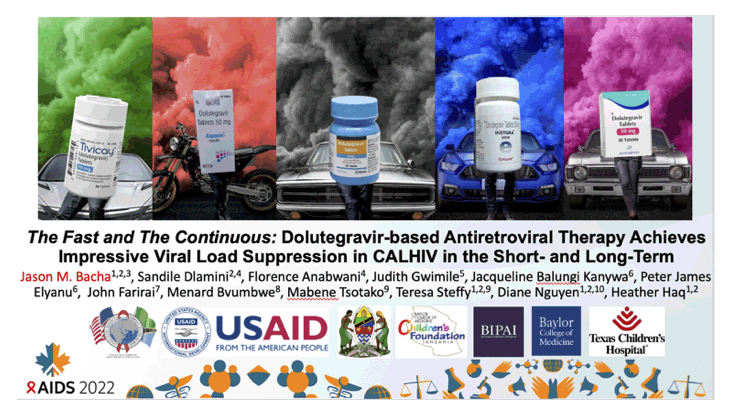
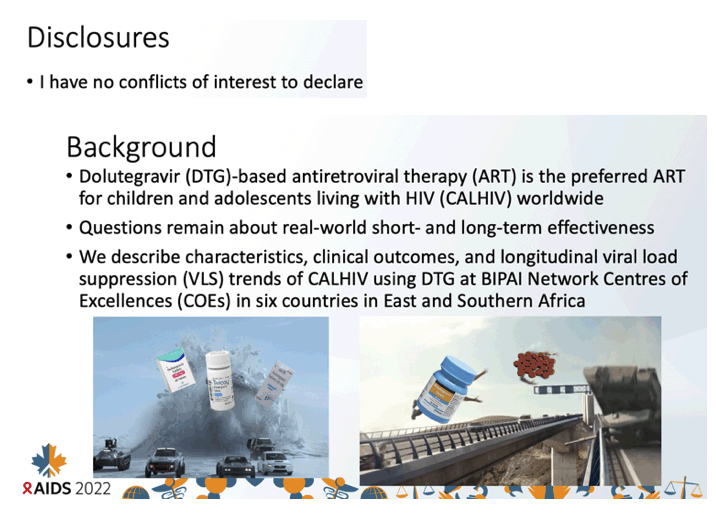
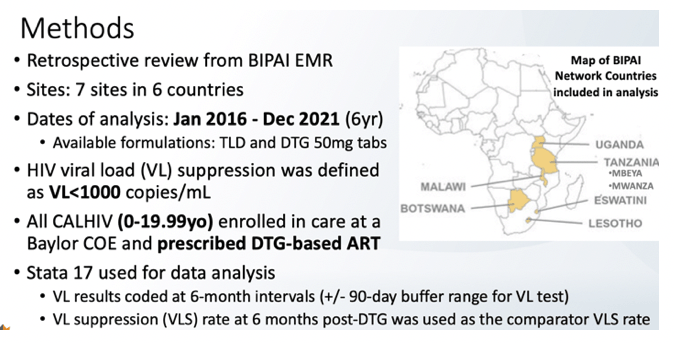

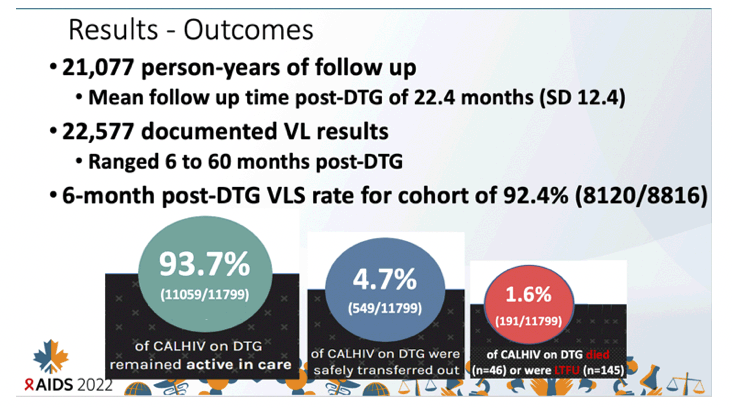
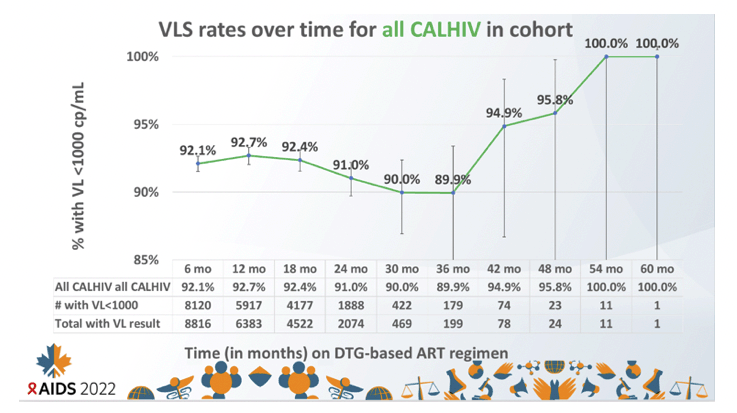
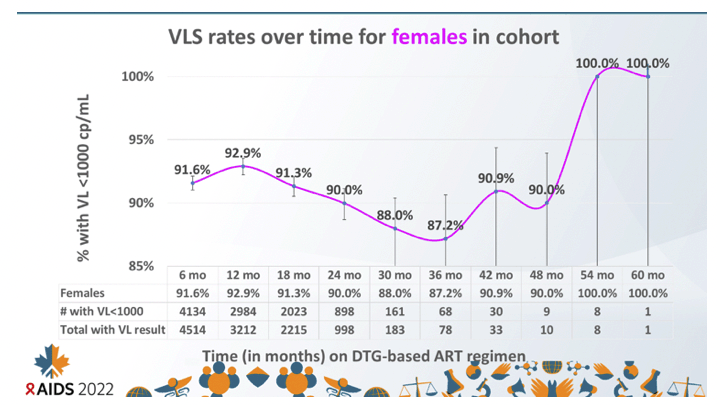
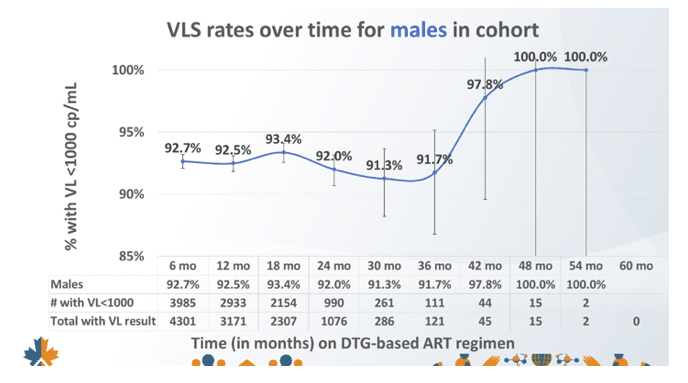
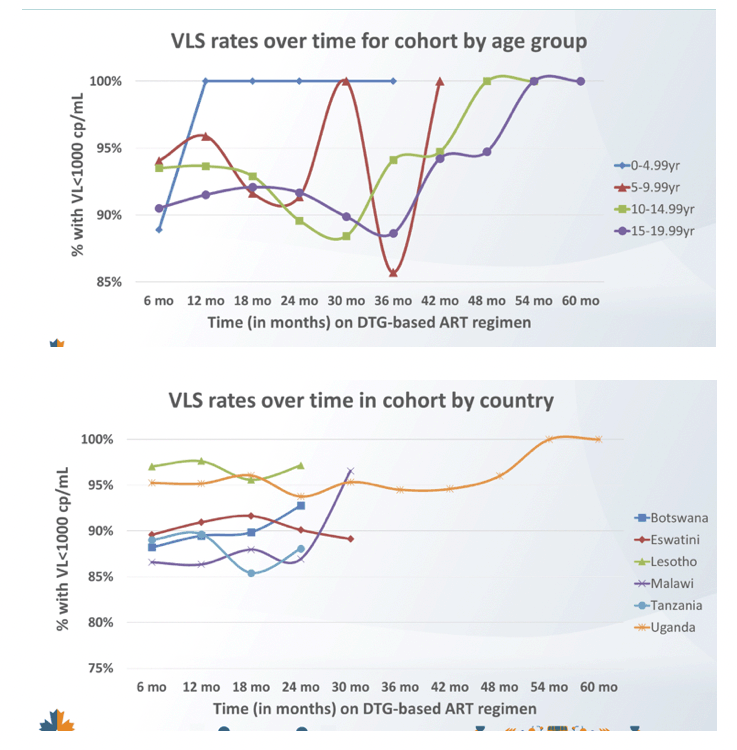
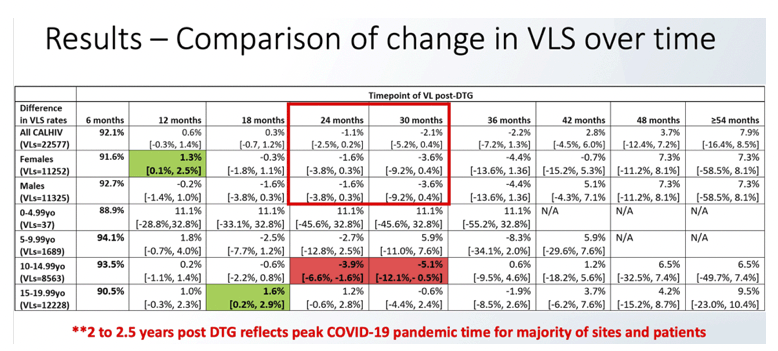
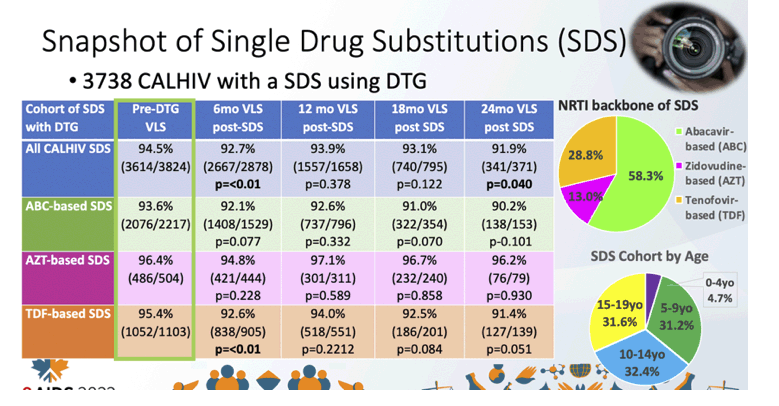
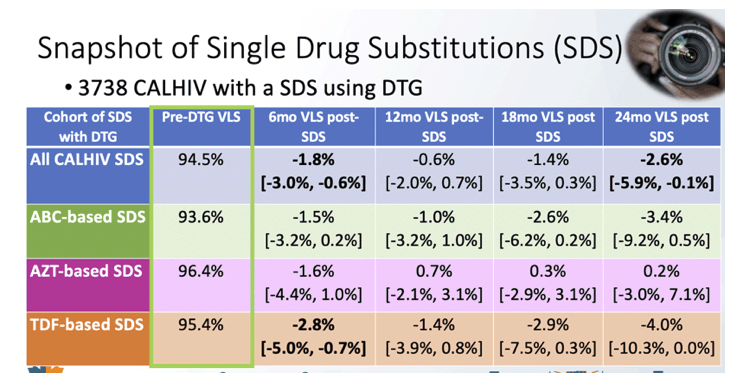
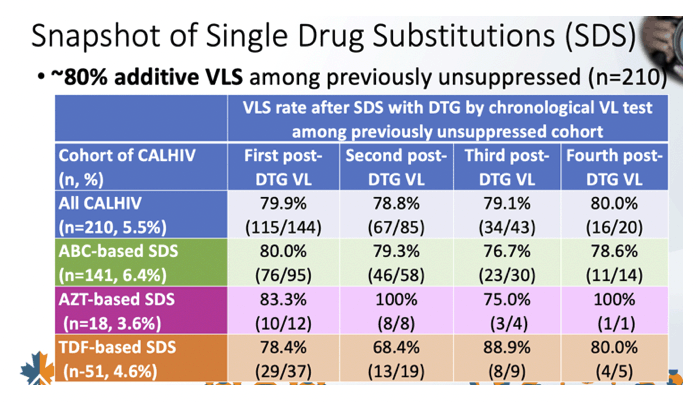

|
| |
|
 |
 |
|
|